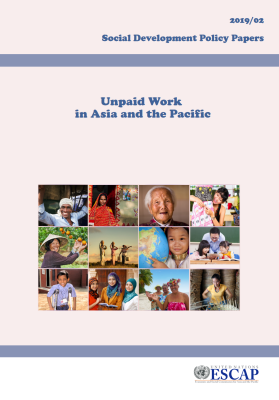Unpaid work in Asia and the Pacific: Policy Brief
Women in Asia and the Pacific work the longest hours in the world. On average, women in the region worked 7.7 hours daily, of which only 3.3 hours are paid, and the rest are dedicated to unpaid care work. If included in measurement of GDP, unpaid care work undertaken by women in Asia Pacific would add 3.8 trillion USD to the regional total GDP (Woetzel et al. n.d.).
It is well-known that how households in general, and women in particular, decide to spend use their time, has implications for women’s economic participation. 80 percent of the unpaid care work in the region is done by women. Therefore, it is no surprise that the labour force participation rate of women in the region is only 46 per cent. Furthermore, ILO (2018b) reports that 64 percent of women workers in the region are in informal employment.
The need for flexible arrangements between home and work drive women to look for jobs that are accommodating and therefore, become employed in the informal sector which offers flexibility, but at the cost of vulnerable conditions of work and pay. Furthermore, the unpaid work done by women has implications on outcomes such as gender earnings gap, gender gaps in political representation and decision-making. It is agreed in policy and research circles that women’s engagement in unpaid work is one of the main causes for their economic and social disempowerment (UN Women 2018).



